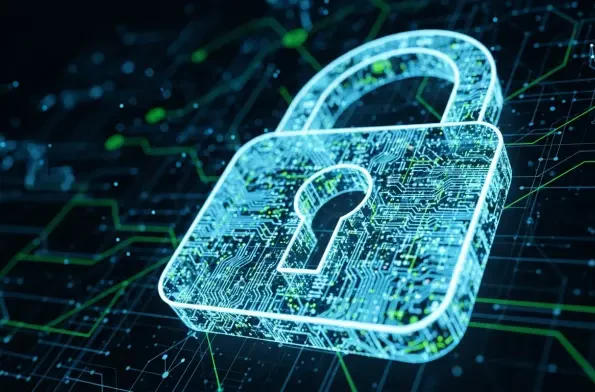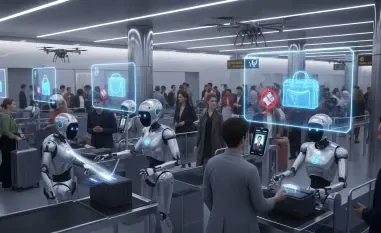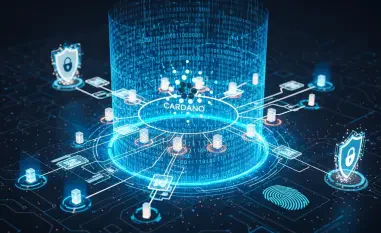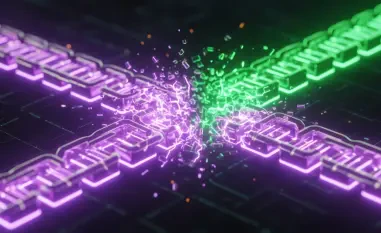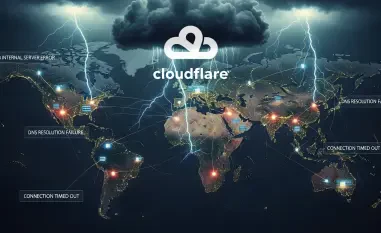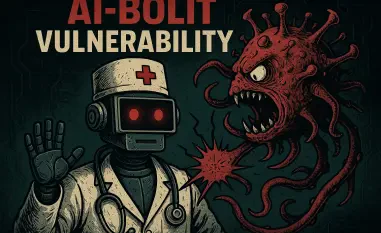Understanding the Ransomware Landscape and Charon’s Emergence
In an era where cyber threats loom larger than ever, imagine a critical government agency in the Middle East suddenly losing access to vital data, with a ransom note tailored specifically to its name flashing across screens, marking a stark reality with the rise of sophisticated ransomware families like Charon. The ransomware landscape today is marked by escalating complexity, as attackers increasingly target enterprises with devastating precision, causing billions in damages annually through data loss and operational downtime. These threats have evolved beyond mere encryption tools into strategic weapons that disrupt entire industries, from healthcare to aviation, exploiting vulnerabilities with alarming efficiency.
Charon, a newly identified ransomware family, has emerged as a significant concern, particularly for sectors like the public sector and aviation industry in the Middle East. Its targeted approach, evident through personalized ransom demands, sets it apart from traditional, scattershot malware campaigns. This ransomware does not merely lock files but employs intricate methods to ensure maximum impact, signaling a shift toward more deliberate and damaging attacks on high-value targets.
The significance of ransomware adopting tactics typically associated with advanced persistent threats (APTs) cannot be overstated. This convergence suggests a blending of immediate, destructive goals with long-term, stealthy infiltration strategies, as seen in Charon’s apparent mimicry of Earth Baxia, a known APT actor. Such overlap raises critical questions about the origins and intentions behind these attacks, highlighting the urgent need for deeper analysis and stronger defenses against this hybrid threat model.
Technical Overlap Between Charon Ransomware and Earth Baxia Tactics
Shared Techniques and Attack Chains
Delving into the mechanics of Charon ransomware reveals a striking resemblance to the methods employed by Earth Baxia, an APT group notorious for targeting government entities. Charon utilizes advanced techniques such as DLL sideloading, where it abuses legitimate executables like Edge.exe to load malicious DLLs, alongside process injection and encrypted shellcode delivery hidden in seemingly innocuous files. These methods enable the ransomware to execute its payload covertly, often bypassing initial security scans with chilling effectiveness.
A closer comparison shows Earth Baxia employing similar tactics, particularly in leveraging trusted binaries for malicious intent, a strategy that masks their activities under the guise of normal system operations. The shared use of such sophisticated attack chains, including the decryption of multi-layered payloads, suggests either a direct influence or a deliberate imitation of proven APT methodologies. This technical alignment amplifies the potential for prolonged undetected access, a hallmark of APT operations now adopted by ransomware developers.
The implications of this overlap are profound, pointing to a possible exchange of tools or knowledge between ransomware operators and APT groups. Whether this represents a mere copycat approach or a deeper collaboration remains uncertain, but it underscores a troubling evolution in cyber threats. Enterprises must now contend with adversaries who combine the persistence of APTs with the immediate havoc of ransomware, necessitating a reevaluation of current security postures to address this dual menace.
Evasion and Disruption Capabilities
Charon’s ability to evade detection is another area where its sophistication mirrors APT tactics, particularly through anti-endpoint detection and response (EDR) capabilities. By masquerading as legitimate Windows services like svchost.exe, it blends seamlessly into system processes, making it challenging for traditional security tools to flag anomalies. Additionally, the presence of dormant anti-EDR drivers in its code hints at future enhancements aimed at disabling protective software outright.
Beyond evasion, Charon employs disruptive tactics designed to cripple recovery efforts, such as deleting shadow copies, emptying the Recycle Bin, and halting security-related services. These actions echo Earth Baxia’s stealth-focused strategies, which prioritize maintaining access while minimizing traces of interference. However, Charon’s approach adds a layer of immediate destruction, ensuring that victims face significant barriers to restoring data without conceding to ransom demands.
This combination of stealth and disruption elevates Charon beyond the realm of typical ransomware, positioning it as a threat capable of long-term damage akin to APT campaigns. The calculated nature of these methods suggests an intent not just to extort but to destabilize, pushing organizations into a corner where operational continuity hangs by a thread. Such tactics demand a response that goes beyond reactive measures, focusing instead on preemptive disruption of attack chains.
Challenges Posed by Charon’s Sophisticated Approach
Charon ransomware introduces unique challenges for enterprises through its highly targeted attacks, often accompanied by customized ransom notes that address victims by name. This personalization indicates extensive reconnaissance, increasing the psychological pressure on organizations to pay up. Furthermore, its ability to propagate across network shares amplifies the scope of damage, affecting not just individual systems but entire infrastructures critical to business operations.
The operational, financial, and reputational risks are staggering, as encrypted data leads to prolonged downtime, costly recovery efforts, and potential breaches of sensitive information. Industries like aviation, reliant on real-time data, face particularly severe consequences, where even brief interruptions can cascade into safety concerns and loss of public trust. The financial burden of ransom payments, though often discouraged, remains a tempting shortcut for some, further fueling the ransomware economy.
Detection and recovery are complicated by Charon’s multi-stage attack chain and pre-encryption disruptions, which dismantle standard recovery mechanisms like backups. Mitigation strategies must therefore focus on early identification of suspicious activities, such as unusual process behaviors, alongside robust, offline backup systems. Strengthening network segmentation can also limit lateral movement, reducing the blast radius of an infection and preserving critical assets during an attack.
Regulatory and Security Implications of Converging Ransomware and APT Tactics
The convergence of ransomware and APT tactics, as exemplified by Charon, poses significant regulatory challenges, particularly in adhering to data protection laws across jurisdictions. Organizations hit by such attacks often struggle to meet compliance requirements, facing penalties for data breaches while grappling with the immediate crisis. This dual burden underscores the inadequacy of existing frameworks to address hybrid threats that blend rapid destruction with covert persistence.
Enhanced security measures and industry standards are essential to counter these sophisticated threats, necessitating updates to guidelines that account for APT-inspired ransomware. Governments and regulatory bodies must collaborate with private sectors to establish benchmarks for incident response and data safeguarding, ensuring that compliance evolves in tandem with emerging risks. Without such alignment, enterprises remain vulnerable to both legal repercussions and operational setbacks.
Proactive cybersecurity frameworks are critical to meeting regulatory expectations and protecting against evolving attack methods. Adopting a risk-based approach, supported by continuous monitoring and threat intelligence, can help organizations stay ahead of compliance demands while fortifying defenses. This shift toward prevention over reaction is not just a regulatory imperative but a strategic necessity in an environment where threats like Charon redefine the boundaries of cyber risk.
Future Outlook: The Evolution of Ransomware and APT Convergence
Looking ahead, the trajectory of ransomware adopting APT tactics points to a future of increasingly personalized and high-impact attacks. As threat actors refine their methods, the likelihood of campaigns targeting specific industries or even individual entities with tailored exploits grows, potentially leading to greater disruption. This trend could see ransomware becoming a tool for geopolitical leverage, especially in regions with heightened tensions or strategic importance.
Emerging technologies, such as artificial intelligence-driven anomaly detection and blockchain-based backup solutions, offer hope in countering these threats, alongside platforms like Trend Vision One that integrate threat intelligence for proactive defense. These innovations must be paired with global cooperation to share insights and indicators of compromise, building a collective shield against sophisticated adversaries. Investment in such tools will be crucial over the next few years, particularly from this year to 2027, to keep pace with accelerating attack vectors.
Global economic and geopolitical factors will likely influence the proliferation of sophisticated ransomware campaigns, as economic disparities drive cybercrime in some regions while state-sponsored actors exploit digital warfare in others. Monitoring these dynamics will be essential for predicting threat patterns and allocating resources effectively. The cybersecurity community must remain vigilant, adapting strategies to address not just technical challenges but also the broader context shaping these attacks.
Conclusion
Reflecting on the insights gathered, it becomes evident that Charon ransomware marks a pivotal moment in the cybersecurity landscape, blending the destructive force of ransomware with the stealth of APT tactics akin to Earth Baxia. The detailed examination of its attack chain and evasion techniques reveals a threat that demands far more than conventional defenses. Enterprises face unprecedented challenges, from operational paralysis to regulatory scrutiny, as they navigate the fallout of such sophisticated incursions.
Looking back, the path forward requires a commitment to multi-layered defenses, integrating system hardening with resilient backup practices to mitigate future risks. A renewed focus on user training emerges as a cornerstone, empowering employees to recognize and resist initial compromise attempts. Leveraging advanced platforms for threat intelligence proves indispensable, offering a proactive edge against evolving dangers. Ultimately, the journey ahead calls for sustained collaboration across industries and borders, ensuring that defenses adapt swiftly to outpace the ingenuity of cyber adversaries.
